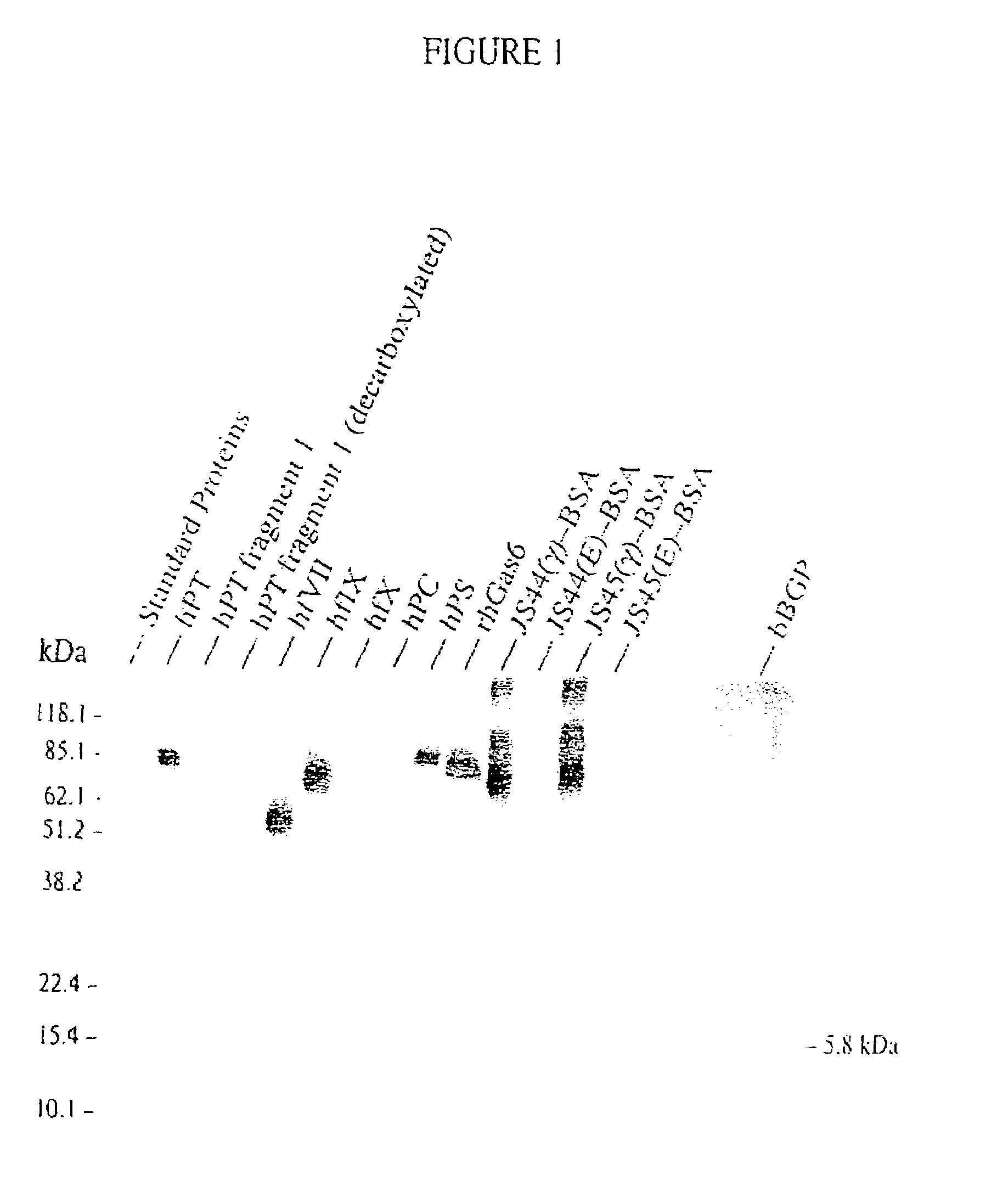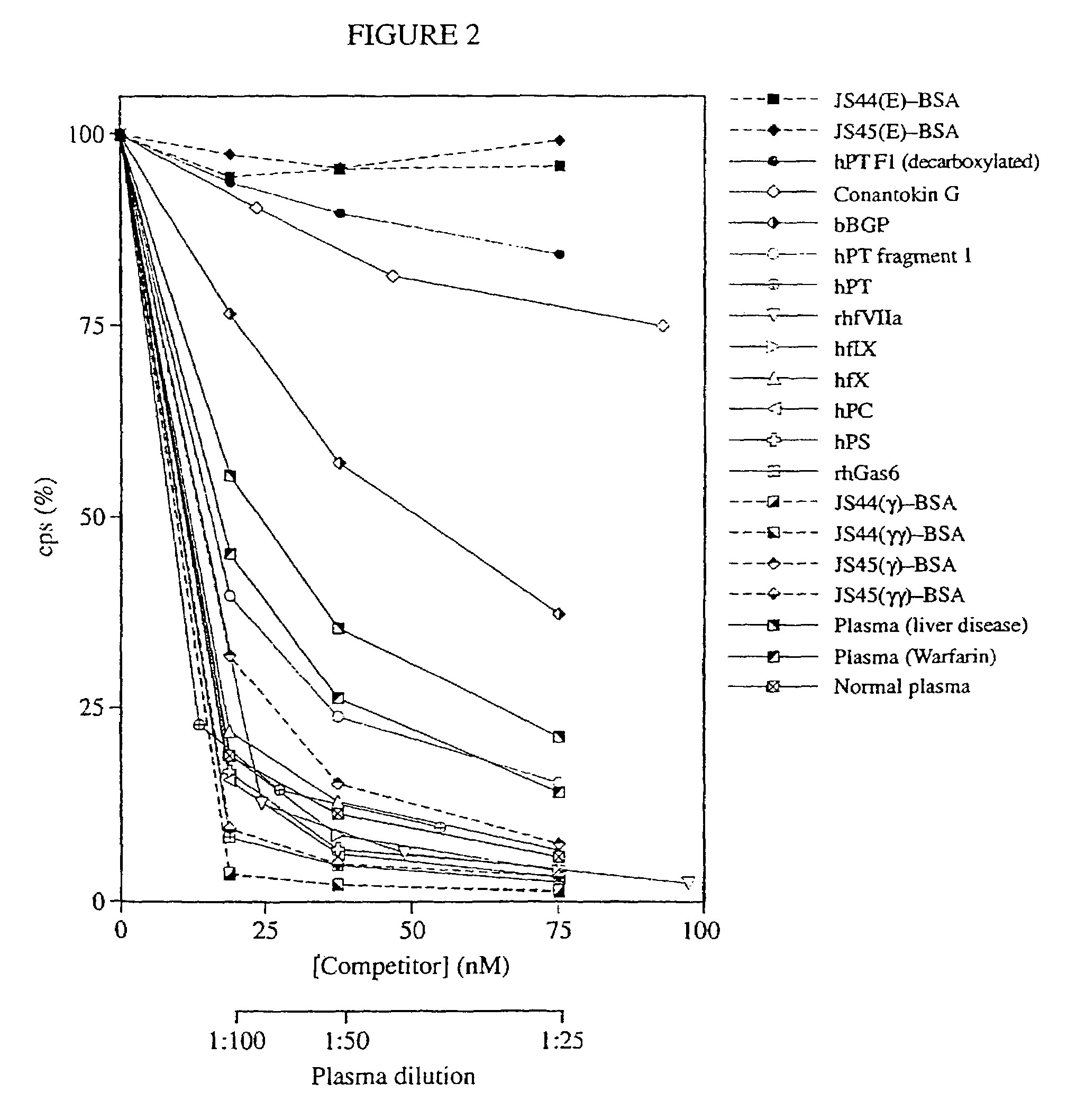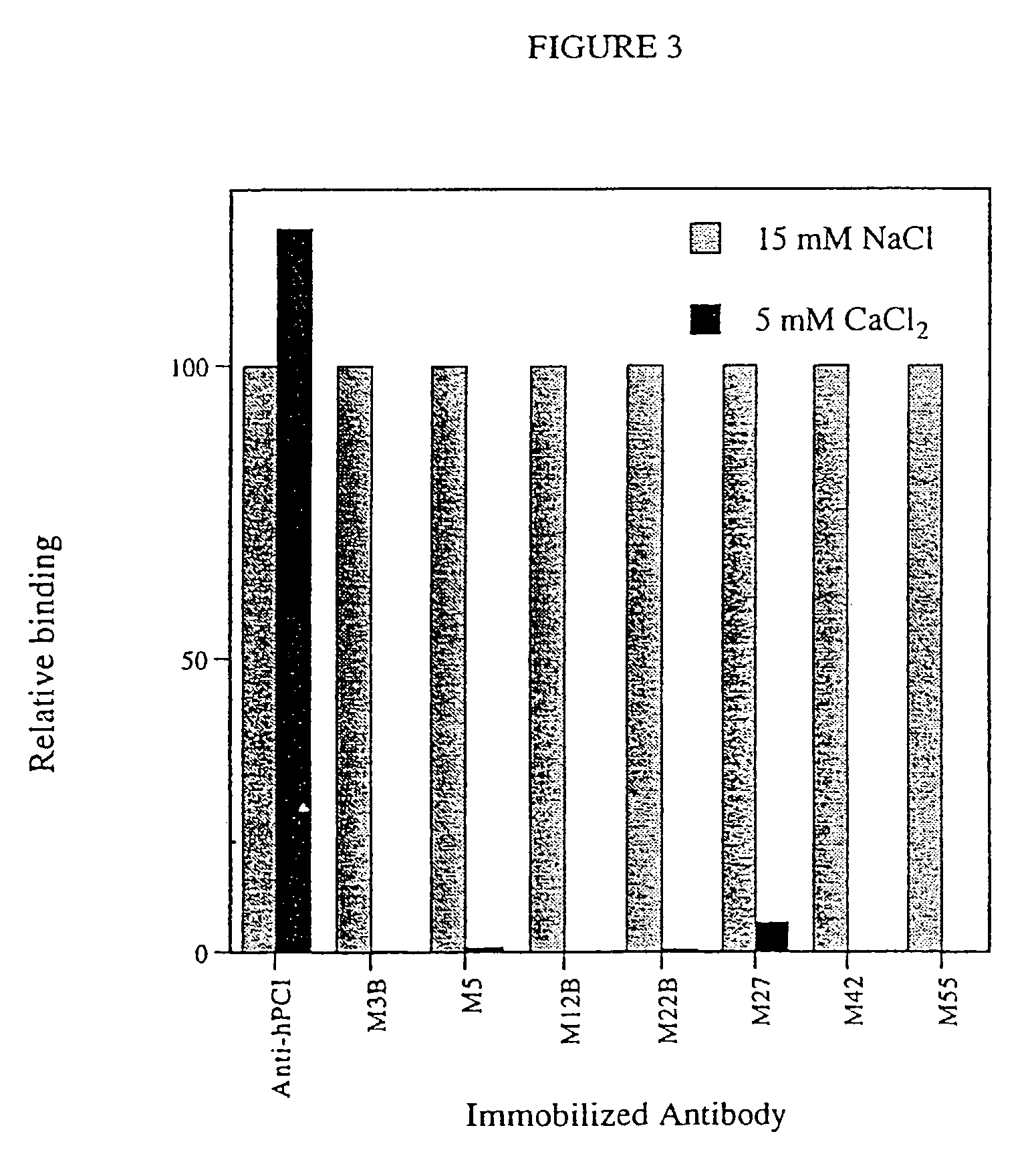Antibodies binding a gamma carboxyglutamic acid displaying epitope
a technology of gamma carboxyglutamic acid and antibody, applied in the field of antibodies for the detection of carboxyglutamic acid (gla), can solve the problems of unsuitable identification methods, limited use of methods, and inability to detect the substan
- Summary
- Abstract
- Description
- Claims
- Application Information
AI Technical Summary
Benefits of technology
Problems solved by technology
Method used
Image
Examples
examples
Peptide Synthesis and Conjugation of Peptides to Bovine Serum Albumin:
[0045]Peptides were synthesised on a Milligen 9050 Plus peptide synthesiser (Perkin Elmer Corp., Stockholm, Sweden). The peptide synthesis was made with DPfp Fmoc amino acids from PerSeptive Biosystems (Framingham, Mass., USA). The peptide complex used for immunisation was synthesised using the multiple antigen peptide (MAP) system of Tam (1988) and the amino acid residues around Gla residues were varied (see JS30 in Table 1).
[0046]Immunisations were made as described below. Peptides used for testing the antibodies were synthesised with a C-terminal Cys residue and conjugated to bovine serum albumin via the Cys residues using established procedures.
Production of Gla-Specific Rabbit Polyclonal Antibodies:
[0047]The ability of the synthetic JS30 peptide complex (Table 1) to elicit the production of Gla-specific polyclonal antibodies was tested by immunising rabbits according to standard procedures. Four subcutaneous ...
PUM
| Property | Measurement | Unit |
|---|---|---|
| pH | aaaaa | aaaaa |
| pH | aaaaa | aaaaa |
| pH | aaaaa | aaaaa |
Abstract
Description
Claims
Application Information
 Login to View More
Login to View More - R&D
- Intellectual Property
- Life Sciences
- Materials
- Tech Scout
- Unparalleled Data Quality
- Higher Quality Content
- 60% Fewer Hallucinations
Browse by: Latest US Patents, China's latest patents, Technical Efficacy Thesaurus, Application Domain, Technology Topic, Popular Technical Reports.
© 2025 PatSnap. All rights reserved.Legal|Privacy policy|Modern Slavery Act Transparency Statement|Sitemap|About US| Contact US: help@patsnap.com



